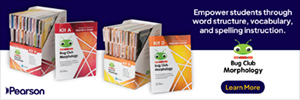What started as two senior research projects in StFX's Aquatic Resources Program has resulted in a journal publication for two recent StFX graduates.
Emilie Perreault and Hannah MacDonald, who worked as undergraduate students at StFX under the supervision of Dr. Ricardo Scrosati in the Marine Ecology Lab, investigated interspecific interactions among seaweeds and invertebrates on Nova Scotia's rocky shores. Specifically, they studied the interactions between algae and filter-feeders, and mussels vs barnacles.
"Both of them did a great job, which allowed me to combine their work to produce a larger paper that we just published in a refereed scientific journal," says Dr. Scrosati. "These studies help us to better understand changes in the abundance of these organisms in our coastal ecosystems."
The article, Interactions Between Sessile Species Groups from Wave-Exposed Rocky Intertidal Habitats in Atlantic Canada Evaluated Using Multiannual Surveys, is available in the journal Ecologies.
INCREDIBLY REWARDING, EXCITING
"Seeing the work appear in a journal has been incredibly exciting. It's rewarding and motivating for continuing my research career. I am very grateful to Dr. Scrosati for his guidance and support throughout this process, his mentorship was key to making my project a success," says Ms. Perreault, a native of Whitehorse, Yukon, who graduated from StFX in 2024 with a Bachelor of Science, majoring in aquatic resources and biology.
Ms. MacDonald of Shediac Bridge, NB, who also graduated in 2024 with a double major in biology and aquatic resources, agrees.
"I am very excited to see our work published in a peer-reviewed journal! It feels rewarding to know that the research Emilie and I worked so hard on has now been shared with the wider scientific community. Having our project published validates all of the time and effort we put into it. It's really meaningful to contribute even a small piece of knowledge to the field," says Ms. MacDonald, who is currently pursuing her MSc in applied science at Saint Mary's University. She is researching how parental salinity exposure in freshwater fish affects offspring seawater tolerance.
Ms. Perreault also continued her studies after StFX and is now pursuing an MSc in Geological Sciences at the University of Saskatchewan. She's part of the Matt Lindsay Lab, where her research focuses on the geochemistry of groundwater resources in Whitehorse. Looking ahead, her goal is to take what she's learned in research and combine it with applied work in areas like groundwater quality and environmental resource management.
MEANT A GREAT DEAL
"My undergraduate research experience through the Aquatic Resources program and under Dr. Scrosati's supervision meant a great deal to me," Ms. MacDonald says.
"Not only did it help me gain admission to my master's program, but more importantly, it gave me first-hand experience in leading a research project; from asking scientific questions to analyzing data and interpreting results."
Her research project was part of the Aquatic Resources program course Aqua 450, where senior students can conduct an independent research project. She reached out to Dr. Scrosati, whose courses and research she says she had found fascinating, to see if he had a project she could work on. "He provided Emilie and I with a dataset on sessile species abundance collected across multiple intertidal sites in Nova Scotia over four years.
"Our task was to analyze species abundance relationships: I focused on mussels vs barnacles, while Emilie worked on seaweeds vs filter-feeding invertebrates. Out of 32 relationships, we found that 31 per cent of seaweed vs filter-feeder relationships and 25 per cent of barnacle vs mussel relationships were significant. Most seaweed vs filter-feeder relationships were negative, while most barnacle vs mussel relationships were positive. These findings suggest that seaweeds and filter-feeders often compete, whereas barnacles may help facilitate mussel colonization. At the same time, because significant interactions were relatively infrequent, this indicates the highly stressful conditions of these habitats may limit species interactions overall," she explains.
MENTORSHIP AND COLLABORATION
Ms. Perreault says this project was the first time she got to experience the full research process, from working with a large dataset, to asking questions and interpreting results. "The AQUA program was central to my experience," she notes. "It allowed me to work alongside supportive faculty and peers and showed me the value of mentorship and collaboration in research. Altogether, the experience built my confidence and confirmed that I wanted to keep doing research."
In her research, she used long-term data collected from Nova Scotia's rocky intertidal shores and studied the interactions between algae and filter-feeders, two dominant functional groups in these ecosystems. She analyzed 36 datasets (nine sites over four years) using generalized additive (GAM) modelling, to look for patterns of interactions between these groups.
"Only a small portion of the cases showed strong interactions. When they did, the majority of interactions were negative, likely due to competition for space, or the algae physically interfering with filter-feeders in wave-exposed areas. Overall, though, most results were weak or non-significant. This suggests that in stressful habitats like the intertidal shore, where organism face strong waves and exposure at low tide, the environment itself plays a stronger role in shaping interactions. In other words, abiotic stress often outweighs species interactions."










